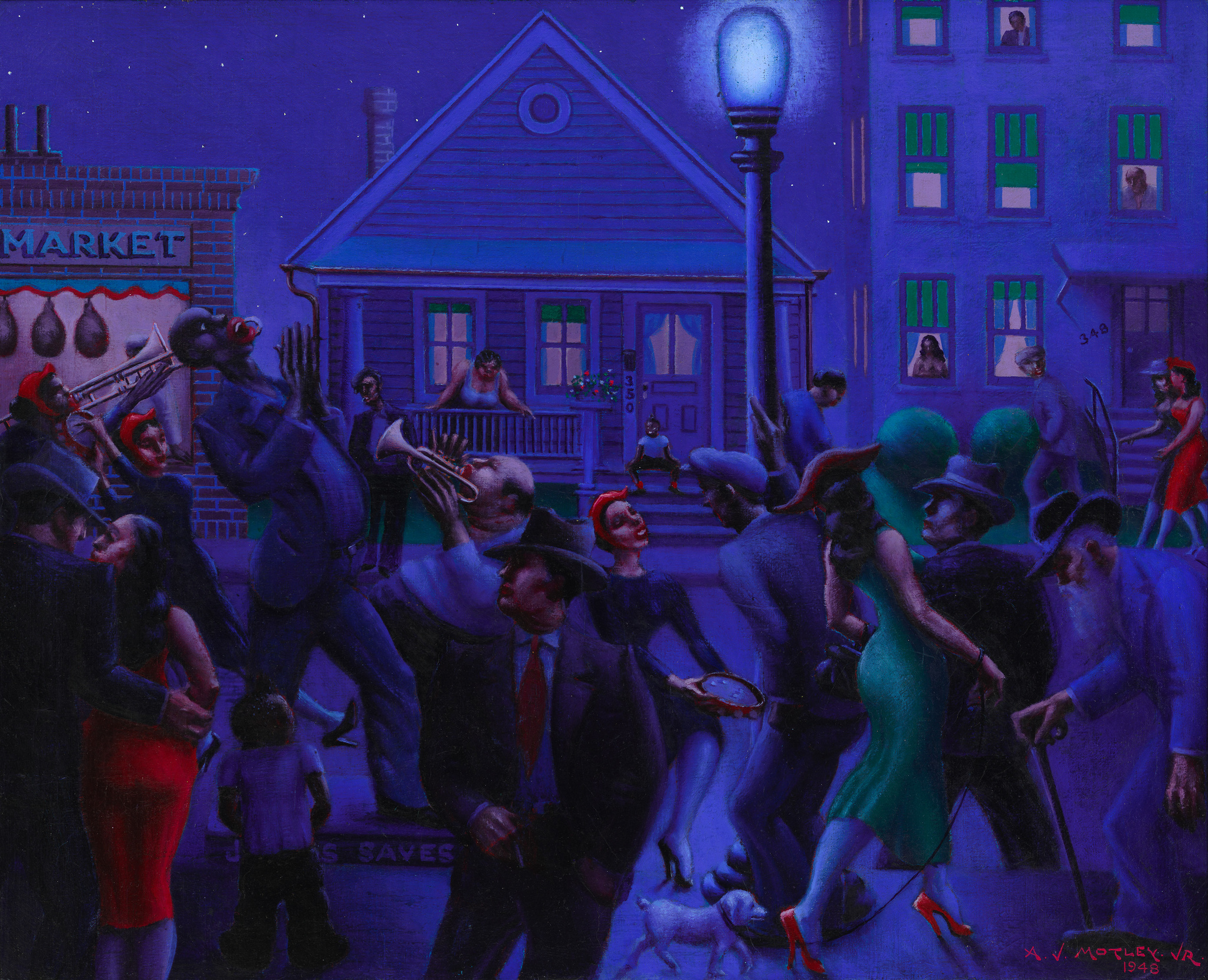Archibald J. Motley Jr., Gettin’ Religion, 1948
From Archibald Motley: Jazz Age Modernist
Oct 2, 2015
0:00
Archibald J. Motley Jr., Gettin’ Religion, 1948
0:00
Narrator: Davarian Baldwin discusses another one of Motley’s Chicago street scenes, Gettin’ Religion.
Davarian Baldwin: Here, the entire piece is bathed in a kind of a midnight blue, and it gets at the full gamut of what I consider to be black democratic possibility, from the sacred to the profane. In the middle of a commercial district, you have a residential home in the back with a light post above it, and then in the foreground, you have a couple in the bottom left-hand corner. Then in the bottom right-hand corner, you have an older gentleman, not sure if he's a Jewish rabbi or a light-skinned African American.
Like I said this diversity of color tones, of behaviors, of movement, of activity, the black woman in the background of the home, she could easily be a brothel mother or just simply a mother of the home with the child on the steps. You're not quite sure what's going on. It really gets at Chicago's streets as being those incubators for what could be considered to be hybrid cultural forms, like gospel music that came out of the mixture of blues sound with sacred lyrics. You could literally see a sound like that, a form of worship, coming out of this space, and I think that Motley is so magical in the way he captures that. But the same time, you see some caricature here.
The gentleman on the left side, on top of a platform that says, "Jesus saves," he has exaggerated red lips, and a bald, black head, and bright white eyes, and you're not quite sure if he's a minstrel figure, or Sambo figure, or what, or if Motley is offering a subtle critique on more sanctified, or spiritualist, or Pentecostal religious forms. You're not sure if he's actually a real person or a life-sized statue, and that's something that I think people miss is that, yes, Motley was a part of this era, this 1920s and '30s era of kind of visual realism, but he really was kind of a black surreal painter, somewhere between the steady march of documentation and what I consider to be the light speed of the dream.
